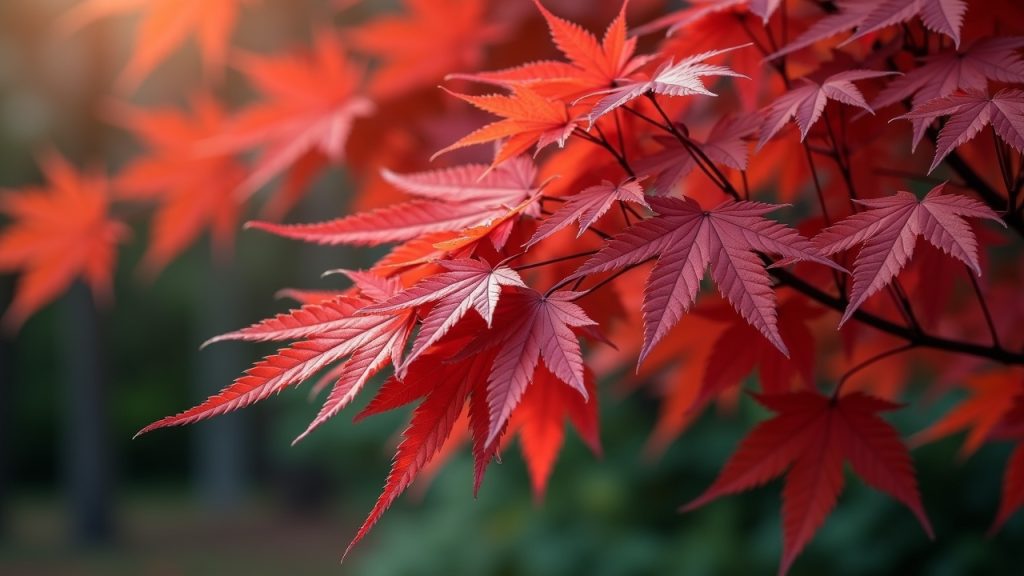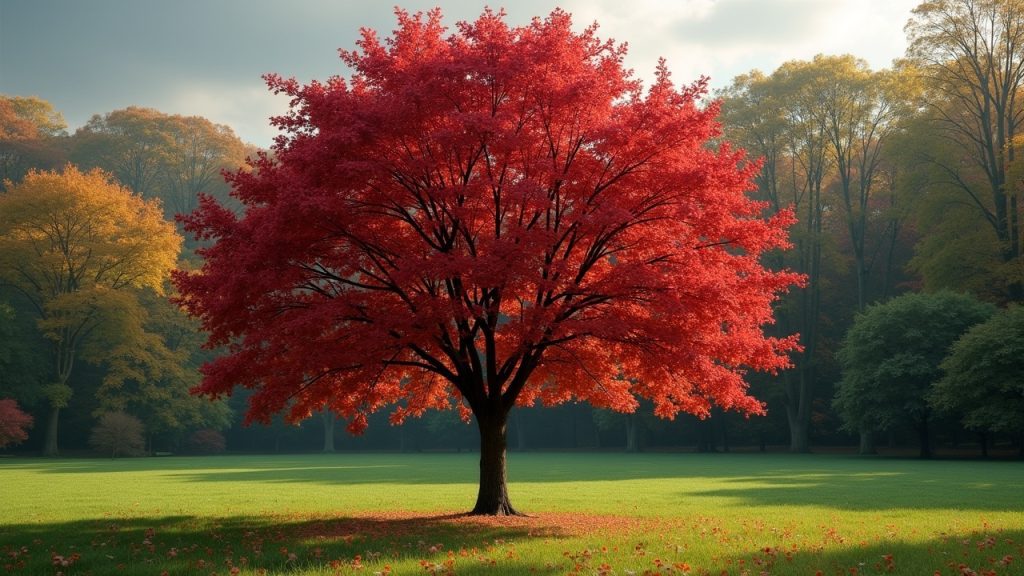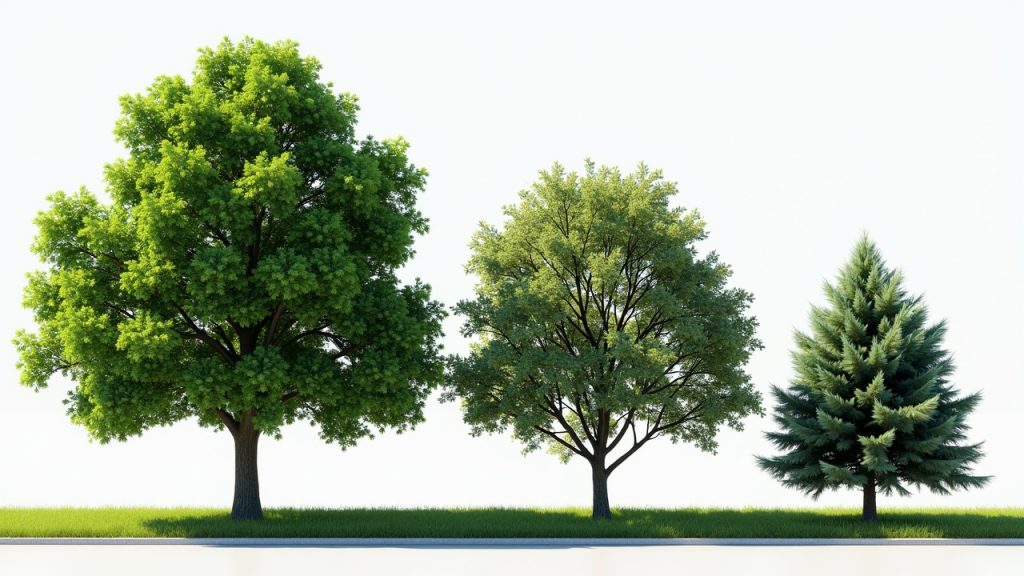The Impact of Trees in Small, Medium and Large Gardens
Planting a tree is an investment in your garden’s future. A living legacy that will grow alongside your memories. But select the wrong variety, and that charming sapling could become an overgrown monster, dominating your space and potentially causing structural problems.
Whether you’re working with a cozy courtyard or a sprawling estate, finding that perfect match requires thoughtful consideration of size, scale, and growing conditions.
Trees are the backbone of any garden, offering beauty, shade, and a haven for wildlife. But with so many species and sizes available, how do you ensure you pick a tree that enhances, rather than overwhelms, your outdoor space?
In this guide, we’ll help you choose the perfect tree to suit the size of your garden, while keeping modern trends and sustainability in mind.
Why Size Matters In Tree Selection
The most common mistake garden enthusiasts make is underestimating how large a tree will eventually become. That adorable potted specimen at the garden centre might reach 40 feet in height and spread just as wide within a decade.
By understanding your garden’s dimensions and a tree’s mature size, you can avoid costly mistakes and create a harmonious outdoor space that works for years to come.
Measuring Your Garden Space
Before falling in love with any particular species, take time to properly assess your available planting area:
Small gardens (under 150 square feet) require particularly careful selection. Measure the available planting area and remember to consider the three-dimensional space. How high can your tree grow without interfering with power lines, views, or neighbours’ light?
Medium gardens (150-500 square feet) offer more flexibility but still demand thoughtful planning. Map out existing features and consider how the tree will interact with other plants as it matures.
Large gardens (over 500 square feet) present different challenges. For example a tree that is too small might look insignificant and fail to fulfill its purpose as a focal point or privacy screen.
When measuring, don’t just consider the ground space, think about the canopy spread and height at maturity. A good rule of thumb: a tree should have at least 6 to10 feet of clearance from any structures when fully grown.
Beyond Size: Other Crucial Factors
While dimensions are vital, several other factors will determine whether a tree thrives in your garden:
Soil condition: Some trees demand rich, well drained soil, while others tolerate clay or sandy conditions. Conduct a simple soil test before making your selection.
Climate considerations: Your hardiness zone dramatically impacts which trees will survive in your area. Native species typically require less maintenance and support local wildlife.
Sun exposure: Most trees need at least 6 hours of direct sunlight, though some varieties tolerate partial shade. Map your garden’s sun patterns through the seasons.
Proximity to structures: Consider underground utilities, foundations, and driveways. Fast-growing trees with aggressive root systems can cause significant damage to nearby structures.
Perfect Trees For Small Gardens
Limited space doesn’t mean limiting your tree options. These compact beauties offer maximum impact in minimal space:
Japanese Maple (Acer palmatum): With their delicate leaves and stunning autumnal colour, these slow-growing trees rarely exceed 15 feet. The ‘Bloodgood’ or ‘Crimson Queen’ cultivars provide dramatic colour in tight spaces.
Dwarf Conifers: Varieties like the Dwarf Alberta Spruce reach just 10 to 12 feet at maturity and maintain an attractive conical shape without pruning.
Espalier Fruit Trees: Training apple or pear trees against a wall or fence allows you to enjoy homegrown fruit without sacrificing ground space.
Multi-Stem Amelanchier (Serviceberry): Offering spring flowers, summer berries, and autumn colour, this adaptable small tree typically reaches just 15 to 20 feet.
Container Options: Consider Japanese maples, dwarf citrus, or ornamental cherries in large pots for the ultimate flexibility in tiny gardens.

Ideal Choices For Medium Gardens
Medium-sized gardens can accommodate more substantial specimens while still requiring careful selection:
Ornamental Cherry (Prunus species): Spring flowering varieties like ‘Yoshino’ or ‘Kwanzan’ reach 20 to 25 feet and create seasonal spectacles without overwhelming medium spaces.
Crabapple (Malus varieties): Modern disease resistant cultivars like ‘Prairifire’ offer spectacular spring flowers, attractive fruit, and a manageable 15 to 20 feet in height.
Paper Bark Maple (Acer griseum): This slow growing specimen reaches about 25 feet, offering year round interest with cinnamon coloured exfoliating bark and stunning autumn colour.
American Dogwood (Cornus florida): Native to eastern North America, this tree reaches 20 to 25 feet and thrives in dappled shade, making it perfect for gardens with larger existing trees.
Redbud (Cercis canadensis): Heart shaped leaves and spectacular spring flowers characterise this native tree that typically reaches just 20 to 30 feet in height.
Statement Trees For Large Gardens
Expansive gardens can accommodate magnificent specimens that would overwhelm smaller spaces:
Oak (Quercus species): While too large for most gardens, oaks make magnificent legacy trees in larger properties. Consider White Oak or Pin Oak for their stately presence and wildlife value.
Tulip Tree (Liriodendron tulipifera): This North American native can reach 70 to 90 feet with distinctive tulip-shaped flowers and magnificent yellow autumn colour.
Copper Beech (Fagus sylvatica ‘Purpurea’): With stunning purple foliage and a magnificent spreading habit, this European specimen can reach 50 to 60 feet and live for centuries.
Dawn Redwood (Metasequoia glyptostroboides): Once thought extinct, this deciduous conifer can reach impressive heights but takes decades to mature, making it a living legacy for future generations.
Ginkgo (Ginkgo biloba): Consider male varieties of this living fossil for golden autumn colour without the fruit. While slow growing, they eventually reach impressive proportions.

Planting And Long Term Considerations
Regardless of your garden size, consider these practical aspects before making your final selection:
Growth rate: Fast growing trees provide quicker impact but often have weaker wood and shorter lifespans. Slow growing species require patience but typically live longer.
Root systems: Surface rooting trees like maples and willows can disrupt patios and lawns, while deep rooted species like oaks pose less risk to hardscaping.
Maintenance requirements: Consider seasonal cleanup (berries, nuts, leaves), pruning needs, and susceptibility to pests and diseases when making your selection.
Seasonal interest: The best garden trees offer multiple seasons of appeal such as spring flowers, summer shade, autumn colour, and winter structure.
Embracing The Right Sized Tree
Choosing an appropriately sized tree creates a garden that feels balanced and harmonious. Visit local botanical gardens to see mature specimens before deciding and consult with local nurseries about varieties that thrive in your specific conditions.
Remember that the best tree for your garden is one that not only fits your space today but will continue to enhance your outdoor environment for years to come.
By taking the time to select thoughtfully, you’re creating a living legacy that future generations will appreciate. By understanding your space and the needs of different trees, you’ll create a landscape that brings joy for years to come. Happy planting!
If you need help with maintaining your trees, please do not hesitate to Reach Out To Us to arrange a meeting with one of our professional tree surgeons. We hope that you found this article on How To Choose The Right Size Tree For Your Garden useful and informative, please do not hesitate to share it with your friends and colleagues.
You may also be interested in reading our article about The Overlooked Impact Of Tree Maintenance On Property Values.



